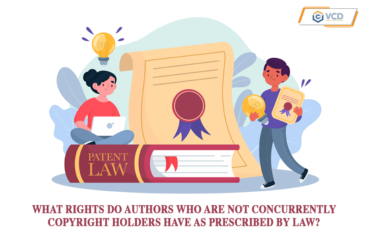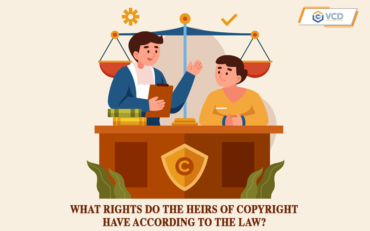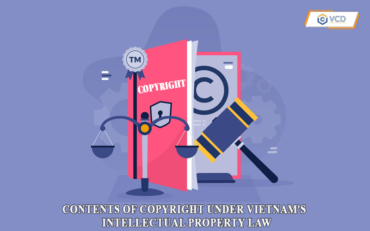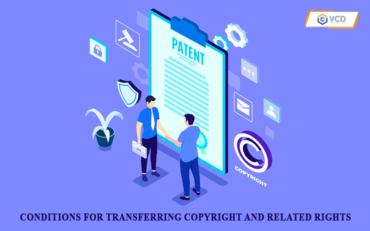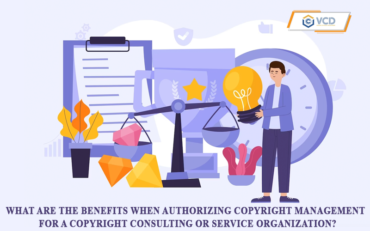In recent days, the online community has been abuzz with the news that manager H.T – manager of singer D.T – sued three Vietnamese singers T.T, D.E, and B.C over copyright issues. Therefore, what will this case look like from the perspective of Intellectual Property Law in general? Please follow VCD’s article below.
1. Overview of the incident
At the end of 2022, manager D.T. once said that D.E. asked for permission to cover 3 songs Rain on Love, Unrequited Love, and Love in the Rain but only agreed to let the male singer upload the recording to YouTube. Do not agree to use it for performance purposes. According to Mr. H.T., all three of these songs were performed by D.E. at many different shows without permission. The same incident happened with singers T.T and B.C.
Singer D.T.’s manager confirmed that despite warnings, some singers still blatantly use it. Therefore, singer D.T.’s management team used a lawyer to sue singers like D.E., T.T., and B.C. In addition, YouTube has also removed posts that were used illegally.
After posting the information on his page, T.T.’s manager contacted him to apologize and bear the cost of hiring a lawyer. Meanwhile, singer D.T.’s manager withdrew the lawsuit.
Then, on the afternoon of October 30, singer B.C’s YouTube channel management unit also contacted singer D.T’s company to apologize and pay the lawyer’s fees, so they also withdrew the lawsuit.
As for D.E.’s case, boss H.T. said he would sue until the end, citing repeated contacts without response.
2. Legal issues raised
2.1. Does singer D.T. have the rights to these three works?
During the 90s and 00s, Chinese music with Vietnamese lyrics was like a fever that swept across the North – Central – South regions of our country. It can be said that all newspapers, media, radio, and people’s music listening habits at that time always prioritized Chinese music with Vietnamese lyrics. Along with that trend, it is impossible not to mention singer D.T. whose works Rain on Love, Unrequited Love, and Love in the Rain have captivated many generations. In the past two years, the appeal of Chinese songs with Vietnamese lyrics has exploded again with the performance of many young singers, leading to the attraction of old songs. Unfortunately, along with this strong comeback, many issues related to music copyright occurred. So, first of all, does singer D.T. have the rights to these 3 works?
As for the music, all three of these works originate from Chinese music. As for the lyrics, all three works have been popularized into Vietnamese lyrics. According to the Intellectual Property Law, all three of these works are derivative works (Clause 8, Article 4 of the Intellectual Property Law) and are subject to copyright protection. A work does not need to be registered as copyright to be protected by law, but copyright arises from the moment the work is created and is expressed in a certain physical form, regardless of the nature of the work distinguishes between content, quality, form, media, language, published or unpublished, registered or unregistered.
- In case singer D.T. proves that these works have the consent of the author or owner to be used as derivative works and proves that he is the author or owner of the above three derivative works then singer D.T. has the rights to 3 works. And one of the most convincing grounds to prove your rights is a Copyright Certificate. Without a Registration Certificate, singer Dan Truong will have to prove that he is the author or copyright owner. The author of the work with many documents and evidence clearly shows the time of completion of the work and the reliability of these documents and evidence before the competent authority to resolve the dispute.
- In case singer D.T cannot prove that the above works have the consent of the author or owner to make derivative works and can prove that he is the author or owner of the three derivative works above, there will be no rights to these three songs and no basis to sue the three singers above.
2.2. Do singers T.T, D.E, and B.C have the right to sing the above three works?
According to research, at the end of 2022, singer D.T.’s manager agreed to let the three singers upload the recordings of three songs Rain on Love, Unrequited Love, and Love in the Rain but did not agree. Use for performance purposes only. However, Point a, Clause 1, Article 26 of the Intellectual Property Law stipulates that in cases of using published works, permission is not required but royalties must be paid, and information about the author’s name and origin must be provided. of works include:
“a) Broadcasting organizations use published works or works that have been permitted by the copyright owner to be recorded on public audio or video recordings for commercial purposes for sponsored broadcasting, Advertising or collecting money in any form does not require permission, but royalties must be paid to the copyright owner from the time of use. Royalty level and payment method are agreed upon by the parties; In case an agreement cannot be reached, the Government’s regulations shall be followed.”
Thus, according to the Intellectual Property Law, the three singers above have the right to sing these songs without permission, but must pay copyright fees to the author or owner of the song from the time of use. and the amount of money will be decided by agreement between the two parties. In case an agreement cannot be reached, it will be based on Clause 3, Article 34 of Decree 17/2023 detailing several articles and measures to implement the Intellectual Property Law. Intellectual property rights and related rights:
“3. The royalty distribution ratio in case audio or video recordings are used according to the provisions of Clause 1, Article 26, and Clause 1, Article 33 of the Intellectual Property Law shall comply with the agreement of the copyright owner. , the performer, and the owner of the relevant rights to that audio or video recording. In case an agreement cannot be reached, the division shall be made according to the following ratios: Copyright owners receive 50%, performers receive 25%, owners of related rights to sound recordings, and video recordings receive 25% of the total royalties collected.
2.3. Is it right or wrong that singer D.T. and his management company asked YouTube to remove D.E.’s videos that use the above three songs?
After receiving apologies from singers T.T and B.C, singer D.T’s management company took a more positive attitude and withdrew the lawsuit. However, this does not apply to singer D.E. Therefore, boss H.T. had a strong statement “resolute to the end” and asked singer D.E. to remove videos using the song on YouTube.
According to research, to be able to use the three songs Rain on Love, Unrequited Love, and Love in the Rain, the management companies of singer D.T. and singer D.E. must have separate service contracts. Accordingly, the terms related to the use of the above three songs must be specified. However, singer D.E still “blatantly” used and performed at music live shows, posted on YouTube, and touched the “reverse scales” of the representative of singer D.T’s management company, making him H.T elected to request YouTube to remove the video using the above three songs. Is this violating the rights under the Contract agreement of both parties?
Although it is possible that in this case, singer D.E. committed a violation, it is not certain that manager H.T.’s act of asking YouTube to remove the song was correct because if there was a violation, it must be handled according to regulations. of the law and manager H.T. as well as singer D.T.’s management company can only request removal if this is mentioned in the Contract between the two parties. Thus, it is necessary to emphasize that once the parties have entered into a contractual relationship, they need to respect and comply with the regulations they have agreed upon.
3. Conclusion
It is unclear who is right or wrong in the above case, but it can be seen that copyright (or copyright) is increasingly respected and is regulated very specifically by law to protect the rights and interests of authors and owners. own. However, this is one of the very complex issues, requiring artists and management companies to have enough knowledge and experience to resolve issues related to copyright, limiting incidents from occurring as above.
Above is the article: “Analysis of the case of singer D.T’s manager suing three Vietnamese singers”. Hope this article will help you.


